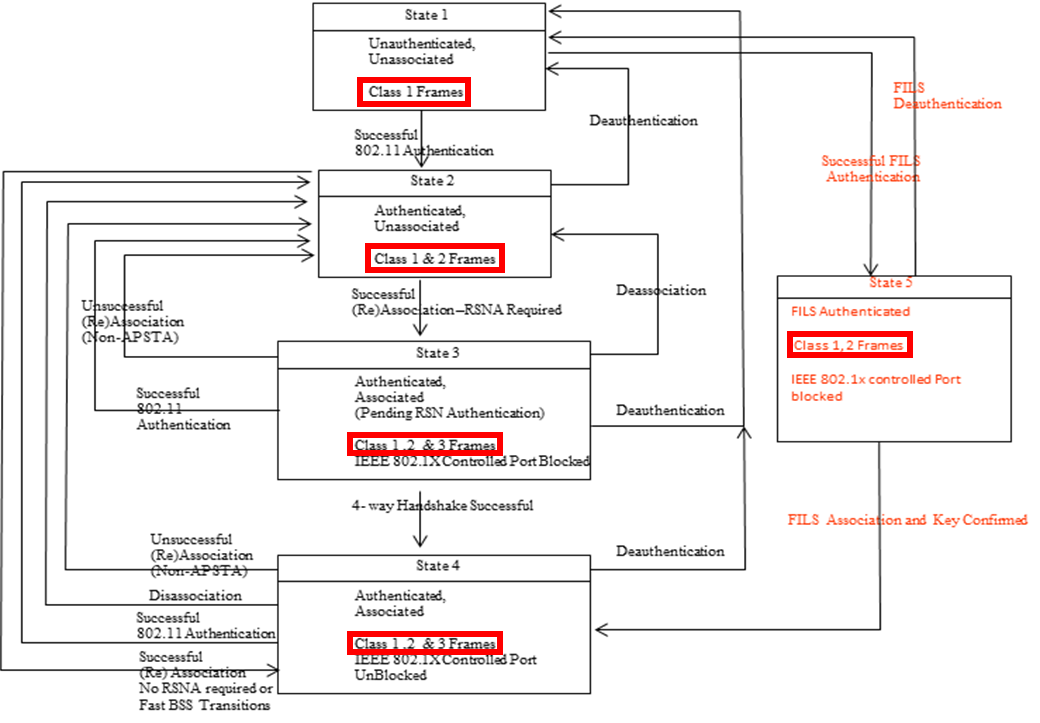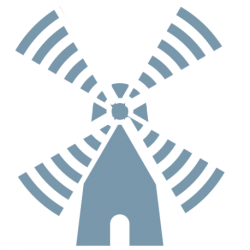While studying for the CWNA and CWAP, you learn about the 802.11 State Machine. This describes the states of client connectivity during a session.
In the provided schematic there are three Frame classes mentioned.

Below an overview of these frame classes.
Class 1
- Control frames
- Acknowledgement (ACK)
- CF-End
- Clear to send (CTS)
- Contention-Free (CF)-End+ACK
- Request to send (RTS)
- Management frames
- Announcement Traffic Indication Message (ATIM)
- Authentication
- Beacon
- Deauthentication
- Probe Request / Response
- Spectrum Management Action. Only applicable in an IBSS.
- Data frames
- Between stations in an IBSS
Class 2
- Management
- Association Request/ Response
- Disassociation
- Reassociation Request / Response
Class 3
- Management
- Block Ack Action
- Direct Link Setup (DLS)
- Quality of Service (QoS)
- Control
- Action. Only applicable in an infrastructure BSS.
- Block Ack (BlockAck)
- Block Ack Request (BlockAckReq)
- Power Save (PS)-Poll
- Data

